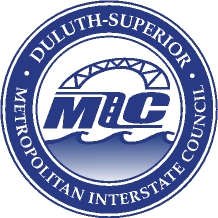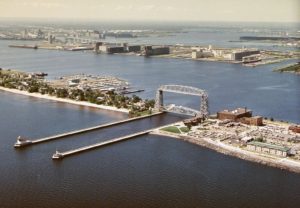We’re working to line up funding for Duluth-Area projects four years from now
Federally-funded transportation projects can be big, expensive, and time-sensitive — which means they need to be planned in advance. In fact, we’ve received applications for Duluth-area projects to be funded in 2022.
The following projects have been proposed by eligible Duluth-area jurisdictions for construction in the year 2022. They will be submitted for review and approval by the MIC Policy Board and the Northeast MN Area Transportation Partnership for inclusion in the Draft 2019-2022 TIP, and we are seeking public input or comment by March 20:

MIC-Area Project Submittals (FHWA Surface Transportation Program (STP) funds)
The three proposed projects will be coordinated between two jurisdictions (St. Louis County and the City of Duluth) to achieve cost savings and reduce construction impacts:
Project: Snively Road – Roadway and Intersection Improvements
Description: Mill and overlay of Snively Rd. between Woodland Ave. and Glenwood St. and construction of a roundabout at Snively Rd./Glenwood St. Intersection
Jurisdiction: St. Louis County and City of Duluth (joint project)
Project Cost: $1,800,000 ($1,290,000 federal, $510,000 state)
Project: Woodland Ave – Roadway and Intersection Improvements
Description: Mill and overlay of Woodland Ave. between Arrowhead Rd. and Anoka St. and replacement signals at the intersections of Woodland Ave./Snively Rd. and Woodland Ave./Arrowhead Rd.
Jurisdiction: St. Louis County and City of Duluth (joint project)
Project Cost: $1,500,000 ($800,000 federal, $606,250 state, $93,750 local)
Project: Arrowhead Rd Preservation
Description: Mill and overlay of Arrowhead Rd. between Woodland Ave. and Dodge St.; ADA upgrades & spot repair to curb, gutter, and sidewalks.
Jurisdiction: City of Duluth
Project Cost: $ 737,500 ($ 590,000 federal, $ 147,500 state)
Total FHWA Funds: $2,680,000 / Total Cost: $3,581,250
MnDOT Project Submittals (FHWA Surface Transportation Program (STP) funds)

Project: Thompson Hill Reconstruction
Description: Reconstruction of north and south bound lanes on I-35 from the bridge over DMIR Railway to the north end of bridge 69879 over Trunk Highway 23
Jurisdiction: MnDOT
Project Cost: $13,000,000 ($11,700,000 federal, $1,300,000 state)

Project: Trunk Hwy 194 Mill & Overlay
Description: Medium mill and overlay of TH 194 from the intersection of TH 2 to the west junction of TH 53
Jurisdiction: MnDOT
Project Cost: $4,543,099 ($3,634,479 federal, $ 908,620 state funds)
Total FHWA Funds: $15,334,479 / Total Cost: $17,543,099
Duluth Transit Authority Project Submittals (FTA Section 5307 transit funds)
Project: Duluth Operating Assistance – Regular Route
Project Cost: $21,000,000
Project: STRIDE Operations
Project Cost: $1,450,000
Project: Operating and Preventive Maintenance
Project Cost: $1,000,000
Project: Bus Support Equipment/Facility Rehabilitation
Project Cost: $ 150,000
Project: Technology Updates
Project Cost: $ 100,000
Project: Bus Stop/Stations/Terminal Updates
Project Cost: $ 75,000
Total FTA Funds / Total Cost: $23,775,000
We want to know what you think!
Do these projects meet our area’s transportation needs, and make good use of our limited federal, state and local funds? Do you have any other comments or questions?
Call Chris Belden at (218) 529-7502
OR – Send Chris an email
OR- Stop in and talk in person at the ARDC/MIC office in downtown Duluth at 221 West First Street (skywalk level)










